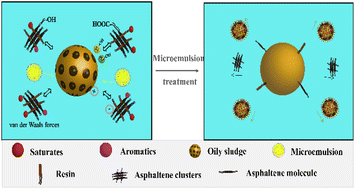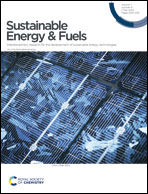Insight into the oil removal mechanism of quaternary ammonium ionic liquid microemulsions for oily sludge treatment†
Abstract
The reduction and harmless treatment of oily sludge is a challenging task. Microemulsion cleaning has been demonstrated to be an effective method to treat hazardous oily sludge. In this research, based on the low toxicity and high polarity of quaternary ammonium ionic liquids, cetyl-(2-hydroxyethyl)-dimethylammonium chlorine ([N1,1,16EtOH]Cl) synthesized from N,N-dimethylethanolamine and 1-chlorohexadecane was chosen as a surfactant to prepare IL microemulsions, which could be used for effective treatment of oily sludge. The influencing factors of microemulsion treatment conditions (stirring time, stirring speed, temperature and centrifugal speed) were explored, and the residual oil rate of oily sludge was reduced to 1.03% under optimal treatment conditions. The sludge after centrifugation was characterized by scanning electron microscopy (SEM), Fourier transform infrared spectroscopy (FTIR), contact angle measurement and thermogravimetry (TG). Additionally, the simulation and calculation proved the strongest interaction between [N1,1,16EtOH]Cl and asphaltenes, which made it better for understanding the oil removal mechanism using [N1,1,16EtOH]Cl microemulsions and provided theoretical guidance for the efficient treatment of oily sludge.



 Please wait while we load your content...
Please wait while we load your content...